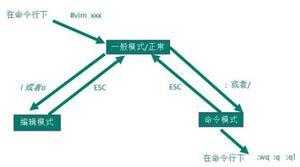python glob model(转)

说明:
1、glob是python自己带的一个文件操作相关模块,用它可以查找符合自己目的的文件,就类似于Windows下的文件搜索,支持通配符操作,*,?,[]这三个通配符,*代表0个或多个字符,?代表一个字符,[]匹配指定范围内的字符,如[0-9]匹配数字。
它的主要方法就是glob,该方法返回所有匹配的文件路径列表,该方法需要一个参数用来指定匹配的路径字符串(本字符串可以为绝对路径也可以为相对路径),其返回的文件名只包括当前目录里的文件名,不包括子文件夹里的文件。
比如:
glob.glob(r'c:\*.txt')
我这里就是获得C盘下的所有txt文件
glob.glob(r'E:\pic\*\*.jpg')
获得指定目录下的所有jpg文件
使用相对路径:
glob.glob(r'../*.py')
2、iglob方法:
获取一个可编历对象,使用它可以逐个获取匹配的文件路径名。与glob.glob()的区别是:glob.glob同时获取所有的匹配路径,而 glob.iglob一次只获取一个匹配路径。这有点类似于.NET中操作数据库用到的DataSet与DataReader。下面是一个简单的例子:
#父目录中的.py文件
f = glob.iglob(r'../*.py')
print f #<generator object iglob at 0x00B9FF80>
for py in f:
print py
- 官方说明:
glob.glob(pathname)
- Return a possibly-empty list of path names that match pathname, which must be a string containing a path specification. pathname can be either absolute (like /usr/src/Python-1.5/Makefile) or relative (like http://www.cnblogs.com/Tools/*/*.gif), and can contain shell-style wildcards. Broken symlinks are included in the results (as in the shell).
glob.iglob(pathname)
Return an iterator which yields the same values as glob() without actually storing them all simultaneously.
New in version 2.5.
For example, consider a directory containing only the following files: 1.gif, 2.txt, andcard.gif. glob() will produce the following results. Notice how any leading components of the path are preserved.
>>> import glob>>> glob.glob('./[0-9].*')
['./1.gif', './2.txt']
>>> glob.glob('*.gif')
['1.gif', 'card.gif']
>>> glob.glob('?.gif')
['1.gif']
以上是 python glob model(转) 的全部内容, 来源链接: utcz.com/z/387558.html








